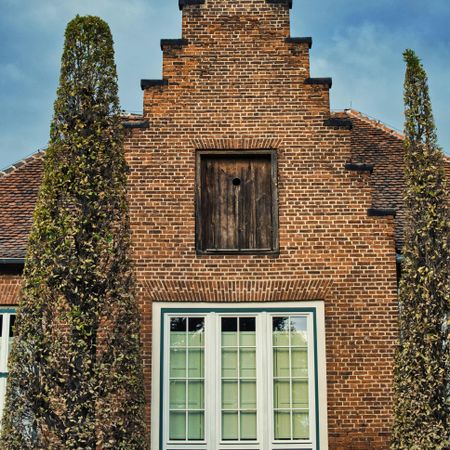Dutch homes have a special charm that sets them apart from houses in other European countries. Whether you’ve noticed it during a stroll through a typical Dutch neighborhood or while dreaming of your own cozy home, there’s something truly unique about these homes. Let’s take a look at the delightful features you’ll find in many Dutch houses.
Small but mighty: compact living in the Netherlands
Compared to other European countries, Dutch homes are often smaller, and this has everything to do with the country’s high population density and limited space. But don’t be fooled by the size—these homes make clever use of every square meter! From creative storage solutions to multifunctional furniture, Dutch homes prove that you can live comfortably in a smaller space.
Warm and cozy: excellent insulation for a comfortable home
Another notable feature of Dutch homes is their excellent insulation. When the cold sets in, well-insulated walls and windows ensure your home stays warm and cozy. This isn’t just great for your comfort—it’s also good for the environment! With less energy wasted, you’re contributing to a more sustainable Netherlands.
Row houses: community living with your neighbors
In many Dutch cities and towns, row houses are incredibly popular. These homes are built close together, often sharing a wall with the neighbors, creating a strong sense of community. Row houses are also usually more affordable, making them a beloved choice for families and first-time buyers.
A touch of green: the charm of front gardens
As you wander through Dutch cities, you’ll see them everywhere: front gardens. These small patches of greenery in front of homes not only brighten up the streets but also help improve air quality and attract pollinators. It’s a way to bring a little bit of nature into the city, and who doesn’t love a blooming front garden?
Building blocks of the Netherlands: traditional materials
Many Dutch homes are built with brick, a material that is not only durable but also contributes to the characteristic look of Dutch streets. Whether it’s an old canal house or a modern home, the warm, red bricks give each building its own identity.
Variety across regions: architectural diversity
The Netherlands is rich in architectural diversity. While you’ll find charming thatched-roof farmhouses in Friesland, cities like Rotterdam and Amsterdam boast modern apartments and towering skyscrapers. These regional differences create a unique and varied housing landscape across the country.
Sustainable living: building for the future
The Netherlands is leading the way in the trend towards sustainability. More and more new homes are being equipped with energy-efficient measures like solar panels and heat pumps. This focus on sustainability is not only good for the planet but also helps homeowners save on their energy bills.
Ground floor living: traditional home layouts
Many Dutch homes have the living room and kitchen on the ground floor. This creates a logical and practical layout, especially in older homes where the rooms are traditionally connected by long hallways.
Hidden gems: basements as extra space
While not every home has one, basements are fairly common in the Netherlands, especially in older houses. These underground spaces are often used for storage but can also be transformed into cozy playrooms or handy laundry rooms.
Dutch homes may be small, but they’re full of charm and character. From clever layouts to sustainable building methods, these houses reflect Dutch creativity and forward-thinking. Whether you’re living in a cozy row house or dreaming of a modern city apartment, there’s always something special to discover in a typical Dutch home!




 Nederlands
Nederlands
 English
English
